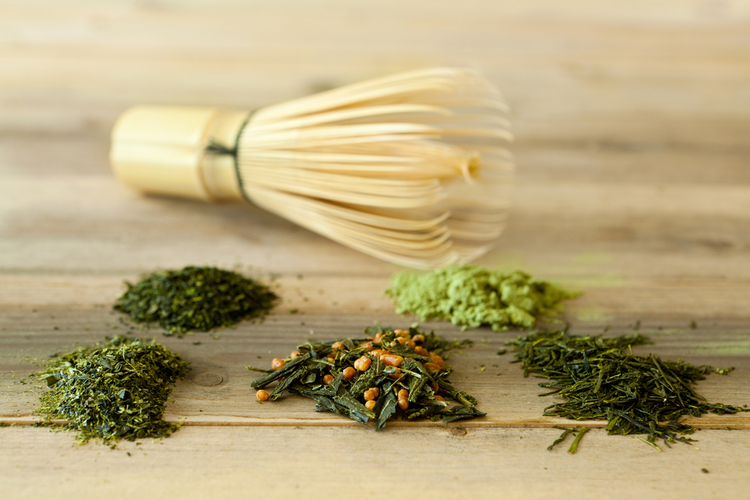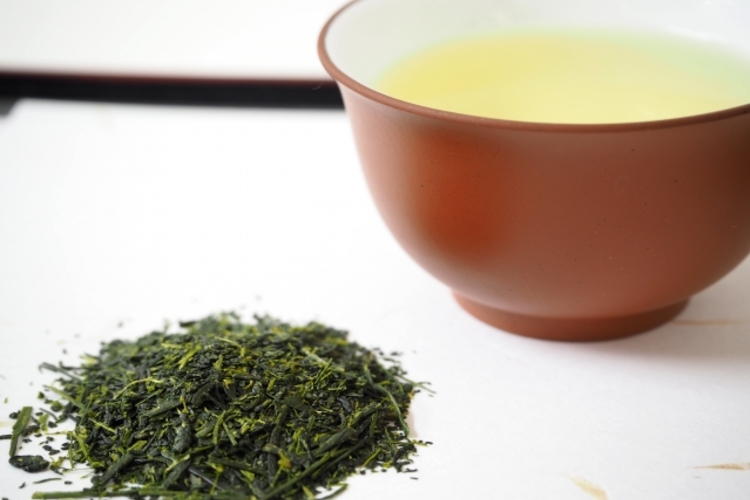Explore features and a variety of Japanese tea around you!
When you hear about "Japanese tea", what kind of image comes to your mind?
Do you get images of different types of tea such as green tea with refreshing flavor, brown rice tea and roasted green tea with roasting aroma, don’t you?
Among various kinds of Japanese tea, most Japanese tea is classified as green tea.
Generally speaking, most tea manufactured in Japan can be called green tea.
Here, we will introduce the characteristics and typical Japanese green tea, different from English black tea and Chinese tea.
All Japanese tea is made from tea leave of “Cha no ki (tea tree plants)”
Not only Japanese green tea but Chinese tea and English black tea are made from leaves of “Chanoki”, tea trees.
What makes big differences in the characteristics of each type of tea is manufacturing methods with emphasis on the degree of fermentation.
Fermentation begins as soon as tea leaves are picked from trees.
This is due to the action of oxidizing enzymes contained in freshly picked tea leaves.
Most of English black tea and Chinese tea are manufactured by fermentation, while the feature of green tea is unfermentation, thus green tea is called "unfermented tea".
By stopping fermentation, the original green color of tea leaves, refreshing taste and aroma are preserved.

Are you now wondering how fermentation of tea can be stopped?
The know-how is found in the "steaming" process that is unique to Japan.
Moisture and freshness of picked tea leaves are kept by air blowing and humidifying so heat that activates fermentation is prevented.
Steaming stops oxidase activities while the green color is maintained.
This process is called "steaming", which is an important process that determines the basic characteristics of "taste, aroma, and light blue color" as well as quality of green tea.
Steaming time takes as short as 20 to 120 seconds, but some subtle differentiation in steaming can result in rich variations, for example, "light steaming" and "dark steaming".
The type of Japanese tea is determined by cultivation and manufacturing methods
Steamed tea leaves are shaped in hand-rolling process, and dried and finished, then refined.
The manufacturing process varies depending on the type of green tea, but differentiation of Gyokuro tea or Kabuse tea starts from their cultivation methods.
From here, we will take you to a highlight tour to show different types of Japanese tea with more detailed classifications.
You would find varieties depending on the area leaves grow that enrich Japanese tea culture.
S encha
This represents green tea.
After steaming, tea leaves are dried by hand-rolling which is the most generic manufacturing method.
Tea leaves of Sencha are shaped long and narrow.
Sencha has fresh scent, well balanced between umami and astringency.
F ukamushi Cha (well-steamed tea)
Steaming time is about 2 to 3 times longer than regular green tea.
When tea is brewed it turns to dark green giving sweet and rich taste.
Tea leaves are crumbled into small pieces and suitable for watering out.
G yokuro
Gyokuro represents luxury green tea.
Although the manufacturing process of Gyokuro is the same as Sencha, but the cultivation process is different.
After approx. 20 days from the sprouting until the time for picking, sprouts are covered and shaded while growing.
Gyokuro is mellow taste with umami and rich sweetness.
With this special aroma this is called "covered incense".

K abuse-cha (Covered tea)
During cultivation, the upper part of the tea tree is covered to block direct sunlight for a week up to 10 days.
Kabuse-cha contains less umami than Gyokuro with more astringency.
The characteristics of Kabuse-cha is positioned somewhere between Sencha and Gyokuro.
B ancha (Coarse tea)
Bancha is made from late sprouts after young leaves are picked, or made by mowing grown leaves with stems.
Bancha has some variations unique to each region.
G yoku Ryoku Cha (Curved leave tea)
Unlike the final manufacturing process of Sencha, there is no forming process.
Instead, tea leaves are dried in a rotating drum with hot air.
It is also called "Guri-cha (“Guri” means round in English)" because tea leaves remain curved.
Gyoku-ryoku cha has a little astringent and mellow taste.
K ama-Nobi-Cha
After tea leaves are picked from trees, raw leaves are directly roasted in a hot kettle without steaming process.
Tea leaves are shaped with fine twists.
K amairi Gyoku-Ryoku- Cha (Kettle roasted green tea)
Just like Kama-Nobi Cha, this is kettle roasted but dried in a rotating drum just like Gyokuryoku-cha.
Tea leaves are curved without twist.
This is also called "Kamaguri (kettle roast).”
K ona-cha (Powdered tea)
Kona-cha is crumbled tea leaves of Sencha and Gyokuro when sifted in the finishing process.
It is colorful, rich taste and aroma.
Nutrients of Kona-cha can be easily ingested.

M e-cha (Bud tea)
Me-cha is made from the curled part of tea leaves which occur in the finishing process of Sencha or Gyokuro.
It contains a lot of umami of tea with strong aroma, rich taste and darker green color.
K uki-cha (Stem tea)
Kuki-cha is made of stems of Sencha and Gyokuro sorted out in the finishing process, and gives young and refreshing taste.
The stems of Gyokuro and Premium Sencha are called "Karigane".
H ouji-cha (Roasted tea)
Houji-cha is made from Sencha, Bancha, Kukicha roasted at high temperature until browned.
The amount of caffeine is reduced when roasted at high temperature.
Houji-cha has roasting aroma and refreshing taste.
G enmai-cha (Brown rice tea)
Genmai-cha is blend tea with roughly the same amount of steamed and roasted brown rice as Bancha or Sencha.
Enjoy roasted aroma of brown rice and refreshing taste.
T encha
Tencha is made of tea leaves dried without rolling after steaming with its stems and tough portions of leaves removed.
As rolling process is skipped, shapes of tea leaves look irregular.
Tencha is a raw material of Matcha.
M atcha (Finely ground powder tea)
Matcha is finely ground powder of Tencha leaves by a stone grinder or grind machine, and Macha is used in tea ceremony.
During cultivation tea leaves are covered to block direct sunlight in the same way as Gyokuro, which makes mild mellow sweet taste.
As fresh tea leaves are finely ground as is, Macha has very deep aroma and flavour, and whole nutritional ingredients can be easily ingested.

Enjoy a variety of Japanese tea suitable to your lifestyle!
Refreshing taste and aroma are not the only features of Japanese green tea.
Green tea is a source of rich nutritional ingredients including vitamins and Catechin as well.
The properties of nutrients vary depend on the type of green tea.
With right knowledge of tea, for example, Macha and Konacha contain whole active ingredient; Houji-cha (roasted tea) and Genmai-cha (poped brown rice tea) contain less caffeine; you would be able to enjoy Japanese tea more effectively according to your age, dinking timing or purpose.
The excellence of Japanese tea is not only its variety of taste but it fits in different occasions of life.
Enjoy several types of Japanese tea in your daily life!








